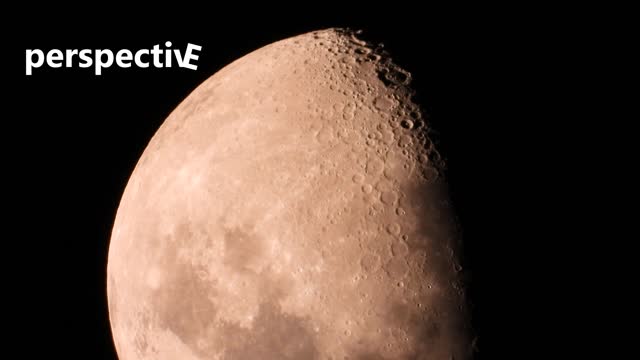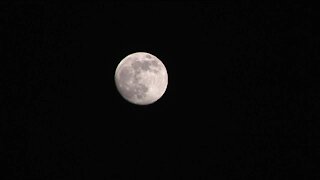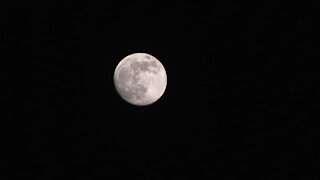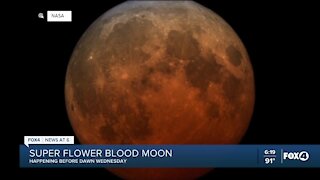Premium Only Content

Close-up of moon in eclipse
The Moon sometimes falls into the shadow of the Earth as it orbits. This is called a lunar eclipse. A lunar eclipse occurs at the time of the full moon and when the Moon is close to its nodes. It is seen as a result of the Moon losing its brightness from the Sun as it enters the shadow of the Earth. The sun should be at or near the opposite node. Under these conditions, the Earth's shadow falls on the Moon. This 42,000,000,000 km extending shadow cone is about 8800 km wider than the Moon's distance. Since the Moon moves at 3456 km per hour, the average time of the lunar eclipse ranges from about 40 minutes to an hour. A lunar eclipse can be observed from any part of the earth where the Moon is above the horizon. The Moon does not completely disappear during a lunar eclipse, as the Sun's rays hitting the Earth's surface against the Moon are refracted by the Earth's atmosphere. Earth's shadow appears red because the blue color is absorbed and the red color is reflected in the refracted light around the Earth. These faint remnants of light reveal the Moon in a peculiar copper color, the visibility of which depends on the local atmospheric conditions. The result is a lunar eclipse.
Some different states of the Earth, Moon, and Sun cause a partial lunar eclipse. In these cases, not the full shadow of the Earth, but the partial shadow of the Moon falls on the Moon.
Lunar eclipses usually occur twice a year. In some special cases, it may be that the lunar eclipse does not occur at all or occurs three times.
Partial Lunar Eclipse took place on June 6, 2020.
-
 1:14
1:14
KMGH
3 years agoSuper moon lunar eclipse visible tomorrow
91 -
![Blue moon lunar eclipse [GMG Originals]](https://1a-1791.com/video/s8/1/z/g/v/S/zgvSb.0kob-small-Blue-moon-lunar-eclipse-GMG.jpg) 0:45
0:45
SharedIllustration
3 years ago $0.07 earnedBlue moon lunar eclipse [GMG Originals]
901 -
 0:46
0:46
KMGH
3 years agoSuper moon and lunar eclipse tomorrow morning
40 -
 2:56
2:56
bostontreeparty
3 years ago $0.09 earnedblood moon... Lunar eclipse
4671 -
 1:25
1:25
Jewels115
3 years agoMagnificent Close-up of the Half Moon
116 -
 1:10
1:10
WFTX
3 years agoSuper flower blood moon and a total lunar eclipse tomorrow
106 -
 2:21
2:21
SkyViewDronePhotography
4 years ago $0.01 earnedSuper Blood Wolf Moon Lunar Eclipse, 01-2019
383 -
 4:04:32
4:04:32
DoomGnome
13 hours agoMornings with DoomGnome: The Long Dark Pt. 6 Astrid Goes Hiking...
22.8K4 -
 DVR
DVR
Chicks On The Right
4 hours agoMock's Back! Plus Kash Patel Tapped For FBI, DOGE Ready To Make Cuts, & More Liberal Lunacy
20.8K1 -
 2:00:01
2:00:01
RG_GerkClan
2 hours agoLIVE in 1440p: New Week, New Domination - Gray Zone Warfare - Gerk Clan
25.1K